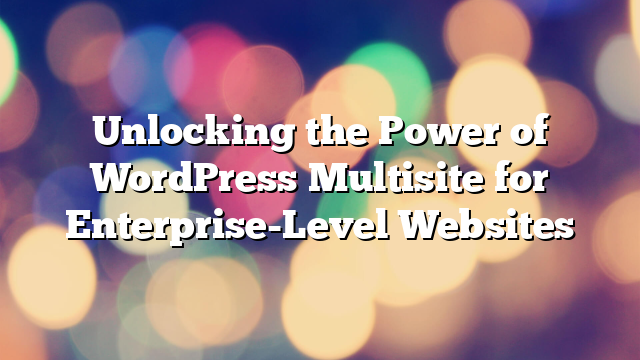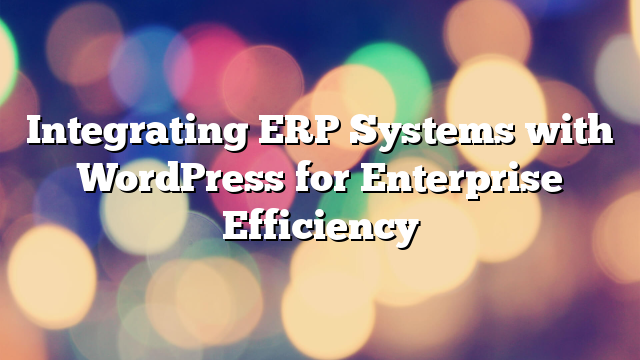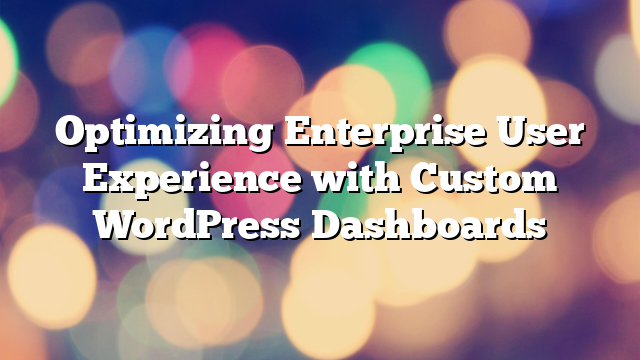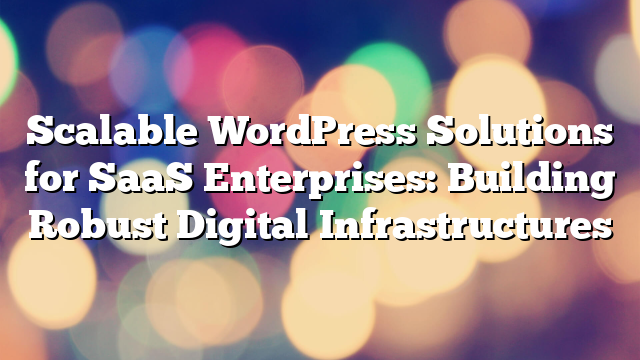Unlocking the Power of WordPress Multisite for Enterprise-Level Websites
12.01.2025

For large businesses managing multiple websites, WordPress Multisite offers an incredibly powerful solution. Whether you’re handling different regions, brands, or departments, Multisite allows enterprises to manage and scale their web presence efficiently under a single WordPress installation. In this article, we’ll explore the benefits of WordPress Multisite for enterprise-level websites and how it can streamline content management and improve scalability.
What is WordPress Multisite?
WordPress Multisite is a feature that allows users to create and manage a network of websites from a single WordPress installation. Instead of running multiple separate WordPress installations for different sites, Multisite enables you to create multiple websites with unique domains or subdomains, all under one central WordPress dashboard.
This feature is ideal for businesses that need to manage multiple sites while keeping everything organized and efficient. Whether it’s managing a global network of company websites or a series of blogs related to different product lines, WordPress Multisite provides a unified framework to control it all.
1. Centralized Management of Multiple Sites
One of the biggest advantages of WordPress Multisite is the ability to manage multiple sites from a single dashboard. This centralized approach allows administrators to easily switch between websites, manage users, update plugins, and even apply theme changes across all sites with just a few clicks.
This reduces administrative overhead and provides consistency across multiple sites. For example, if a business runs multiple regional sites, they can update the core theme or plugins simultaneously, ensuring a unified experience across all regions without having to update each site individually.
2. Simplified Content Management
WordPress Multisite simplifies content management by allowing businesses to control all their websites from one platform. Content editors and managers can access all the sites in the network without having to log into separate WordPress installations, saving valuable time and reducing the complexity of managing content for different regions or departments.
Additionally, Multisite allows businesses to share content across multiple sites. If a business wants to showcase the same product or service on several regional sites, they can do so by creating one central piece of content and easily duplicating it across the network. This reduces the need to recreate content manually for each site, streamlining the process and ensuring consistency.
3. Scalability and Flexibility
As businesses grow, so does the need for scalability. WordPress Multisite offers an easy way to scale your website network without the need for multiple installations or servers. You can create and manage hundreds or even thousands of websites on the same infrastructure, all while maintaining a single, unified WordPress dashboard.
This flexibility is particularly beneficial for enterprises that operate in multiple markets or regions. For instance, a company with websites in North America, Europe, and Asia can manage all sites centrally, ensuring that each one is up-to-date and running smoothly without having to rely on separate teams for each region.
4. User Role Management
WordPress Multisite allows businesses to manage user roles across the entire network. Administrators can assign different roles to users on a per-site basis, giving them appropriate access based on their responsibilities. For example, a content manager for a regional site may have access to edit content but not manage site settings, while a global administrator has full access to all network sites.
This fine-grained control ensures that each user only has access to what they need, reducing the risk of unauthorized access or mistakes. It also allows businesses to delegate tasks efficiently across teams and locations.
5. Cost and Time Efficiency
One of the main benefits of using WordPress Multisite for enterprise websites is the cost and time savings it provides. Since you only need to maintain one WordPress installation, you can significantly reduce hosting costs and save time on server management. This centralization also simplifies backup and maintenance processes, as you only need to back up the entire network once, rather than each individual website.
Furthermore, businesses can reduce time spent on managing plugins and themes. Multisite allows you to install plugins and themes network-wide, making them available to all sites in the network. This ensures that all sites are using the latest versions of the plugins and themes, improving security and functionality without the need for manual updates on each site.
6. Better SEO Control and Consistency
Managing SEO across multiple sites can be challenging, especially for large enterprises that need to maintain consistent branding and keyword strategies. WordPress Multisite offers a more organized approach to SEO management. Since all websites are under the same WordPress installation, you can apply SEO best practices to the entire network and ensure consistency across all sites.
Additionally, with centralized control over permalinks, meta tags, and sitemap generation, businesses can ensure that SEO strategies are applied uniformly across all sites. Whether a business operates multiple regional sites or has several niche sites for different product categories, Multisite enables them to stay on top of their SEO efforts and avoid conflicting optimization strategies.
7. Security and Maintenance Benefits
Managing security on a network of websites is crucial for enterprise businesses. WordPress Multisite offers a more secure approach by centralizing updates, ensuring that all sites in the network receive critical security patches as soon as they are available. This reduces the risk of security vulnerabilities caused by outdated themes, plugins, or WordPress core files.
Furthermore, the centralized management system allows for more efficient troubleshooting. If a security breach occurs on one site, network administrators can quickly identify and address the issue across the entire network. With tools like Wordfence and centralized backup plugins, enterprises can ensure a secure environment for all their sites.
8. Customization with Themes and Plugins
WordPress Multisite allows businesses to apply custom themes and plugins to individual sites within the network. This means that while you can have a consistent core design and functionality across the network, each site can still have its unique look and feel. Whether you’re managing a network of regional websites or different brands, Multisite gives you the flexibility to tailor each site to its specific needs.
This customization is crucial for enterprises that operate in different markets or industries, where different user experiences are required. With Multisite, you can ensure that each website aligns with its target audience while maintaining overall consistency with the network’s brand guidelines.
Conclusion
WordPress Multisite is a powerful tool for enterprises looking to manage multiple websites from a centralized location. By providing a flexible, scalable, and cost-effective solution, Multisite allows businesses to streamline content management, improve SEO consistency, and scale effortlessly. Whether you’re managing regional sites, product lines, or entire brands, WordPress Multisite makes it easier to maintain a unified digital presence without sacrificing control, security, or customization.
If you’re interested in leveraging WordPress Multisite for your enterprise website, contact AllWebDev for expert guidance and implementation support to help you optimize your digital infrastructure.



